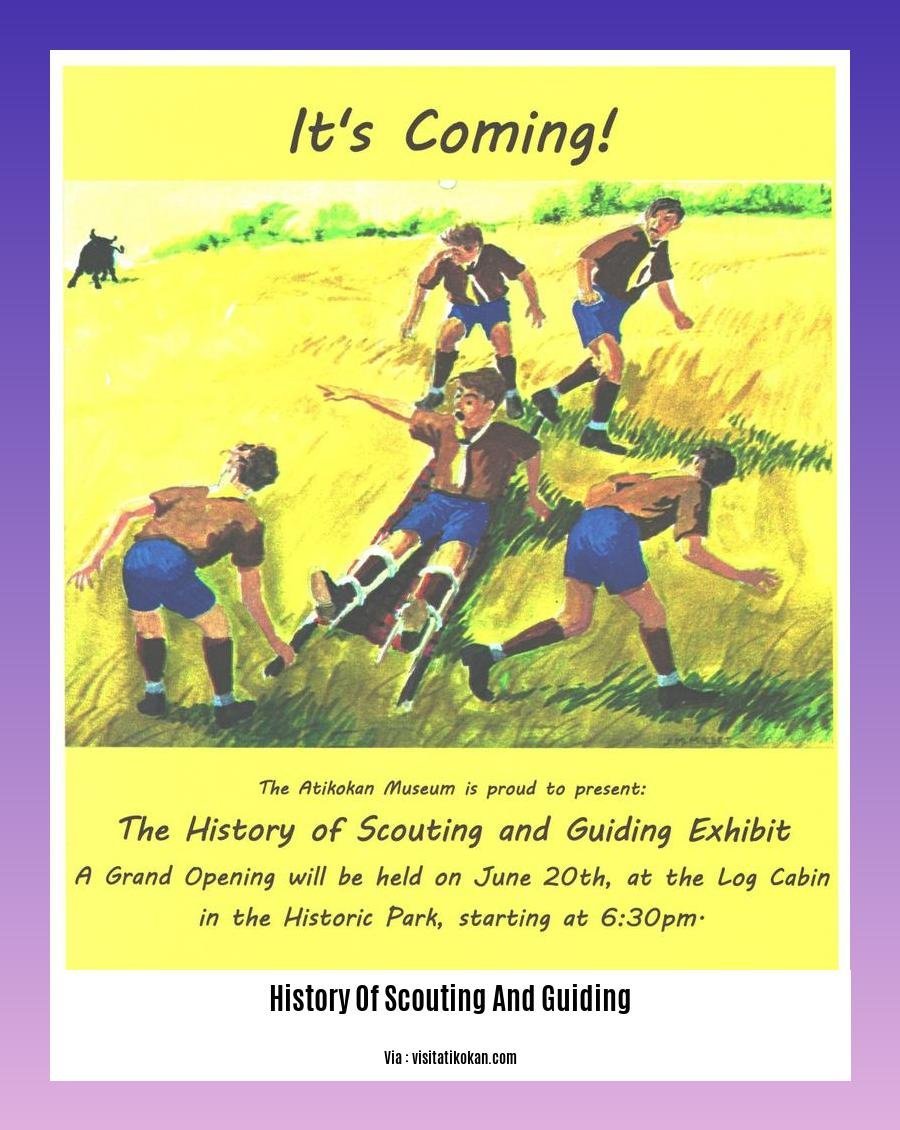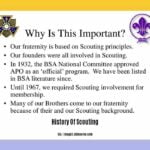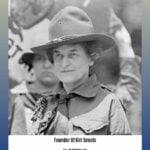Embark on a journey through time as we explore the captivating history of Scouting and Guiding in youth development, a movement that has left an indelible legacy of empowerment. From its humble beginnings to its global reach, discover how this remarkable movement has shaped the lives of countless young people, nurturing their leadership skills, fostering community engagement, and igniting a passion for adventure and personal growth. Join us as we delve into the rich tapestry of Scouting and Guiding, a movement that continues to inspire and transform young minds, leaving an enduring impact on communities worldwide.
Key Takeaways:
– Scouting and Guiding use a “learning by doing” approach to encourage youth development.
– The Asia-Pacific region has the largest number of Scouts with over 500 million participants.
– Guiding was founded in 1909 to address the needs of girls and young women.
– The first World Scout Conference occurred in London in 1920.
– The World Scout Bureau was formed in London in 1920.
– Scouting is a global movement with active members exceeding 57 million.
History of Scouting and Guiding: Over a Century of Youth Development
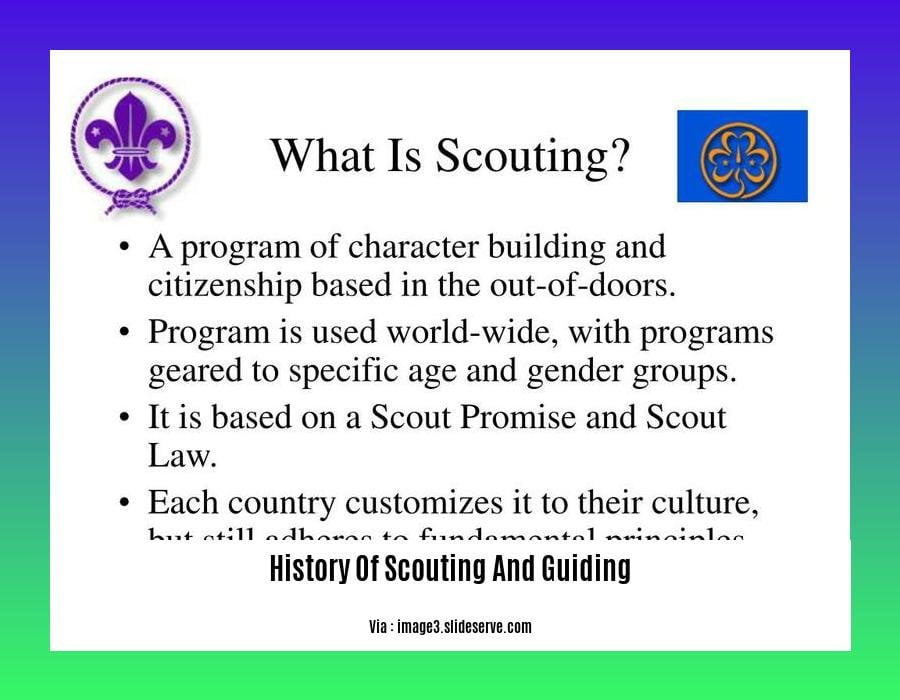
Scouting and Guiding: A Shared History of Empowerment
The stories of Scouting and Guiding are intertwined, forming a rich tapestry of youth empowerment and community engagement. These movements have touched the lives of millions worldwide, fostering personal growth, leadership skills, and active citizenship among young people.
Scouting: A Legacy of Adventure and Leadership
Founded by Robert Baden-Powell in 1908, Scouting aimed to provide young boys with practical skills, outdoor adventure, and a sense of camaraderie. The movement quickly spread across the globe, shaping the lives of countless young men.
Guiding: Empowering Girls and Young Women
In 1909, Agnes Baden-Powell, Robert’s sister, recognized the need for a similar movement tailored to girls and young women. She established the Girl Guides, later known as Girl Scouts, which focused on developing leadership, self-reliance, and community service among girls.
A Shared Commitment to Youth Development
Despite their separate origins, Scouting and Guiding share a common mission: to empower young people to reach their full potential and make a positive impact on society. Both movements emphasize hands-on learning, outdoor activities, and a strong sense of community.
Scouting and Guiding Today
Today, Scouting and Guiding continue to thrive as global movements, reaching millions of young people worldwide. They offer a diverse range of programs and activities, catering to the needs and interests of young people from all backgrounds.
Scouting and Guiding Timeline
Did You Know?
- The Asia-Pacific Scout Region is the largest, with over 500 million members.
- More than 57 million people are actively involved in Scouting worldwide.
- The World Scout Bureau was established in London in 1920.
Scouting and Guiding: A Legacy of Impact
For over a century, Scouting and Guiding have played a vital role in shaping the lives of young people worldwide. They have instilled in generations of youth the values of leadership, service, and global citizenship, empowering them to make a positive impact on their communities and the world at large.
Want to know more about Scotland’s rich past? Listen to the history of Scotland podcast, which delves into the nation’s remarkable journey from ancient times to the present day.
Have a burning curiosity about the origins of the Scouting movement? Dive into the history of scouting, which takes you on a captivating journey of adventure, camaraderie, and service.
Test your knowledge of the Scouting movement with our engaging history of scouting quiz. See how much you know about the organization’s founding principles, iconic figures, and global impact.
Scouting and Guiding During Times of Conflict
In the face of adversity, Scouting and Guiding have played a significant role in supporting young people and communities during times of conflict. With their principles of resilience, adaptability, and service, these movements have demonstrated the power of youth empowerment even in the most challenging circumstances.
Throughout history, Scouts and Guides have risen to meet the demands of conflict and crisis. During World War I and World War II, they served as messengers, first-aid providers, and morale boosters, contributing to the war effort in various ways.
Beyond wartime, Scouting and Guiding have continued to provide stability and support in conflict-affected regions. In refugee camps, they have established safe spaces for young people to learn, play, and develop essential life skills. In post-conflict environments, they have played a crucial role in peacebuilding and reconciliation efforts, bringing communities together and fostering understanding.
One of the key strengths of Scouting and Guiding during times of conflict is their ability to provide a sense of normalcy and routine for young people whose lives have been disrupted by violence and displacement. Through outdoor activities, community service projects, and leadership training, they offer a space for young people to connect with their peers, build resilience, and develop the skills they need to thrive in challenging environments.
Moreover, Scouting and Guiding have played a critical role in promoting peace and understanding across conflict lines. By bringing young people from different backgrounds together, they create opportunities for dialogue, cooperation, and empathy. Through these interactions, young people learn to challenge stereotypes, build bridges, and work towards a more peaceful future.
Key Takeaways:
- Scouting and Guiding have a long history of supporting young people and communities during times of conflict.
- They provide stability and support in refugee camps and post-conflict environments.
- Scouting and Guiding offer a sense of normalcy and routine for young people whose lives have been disrupted by violence and displacement.
- They promote peace and understanding across conflict lines by bringing young people from different backgrounds together.
- Scouting and Guiding empower young people to be agents of change and contribute to building a more peaceful world.
Source 1
Source 2
Adaptations and Innovations in Programming
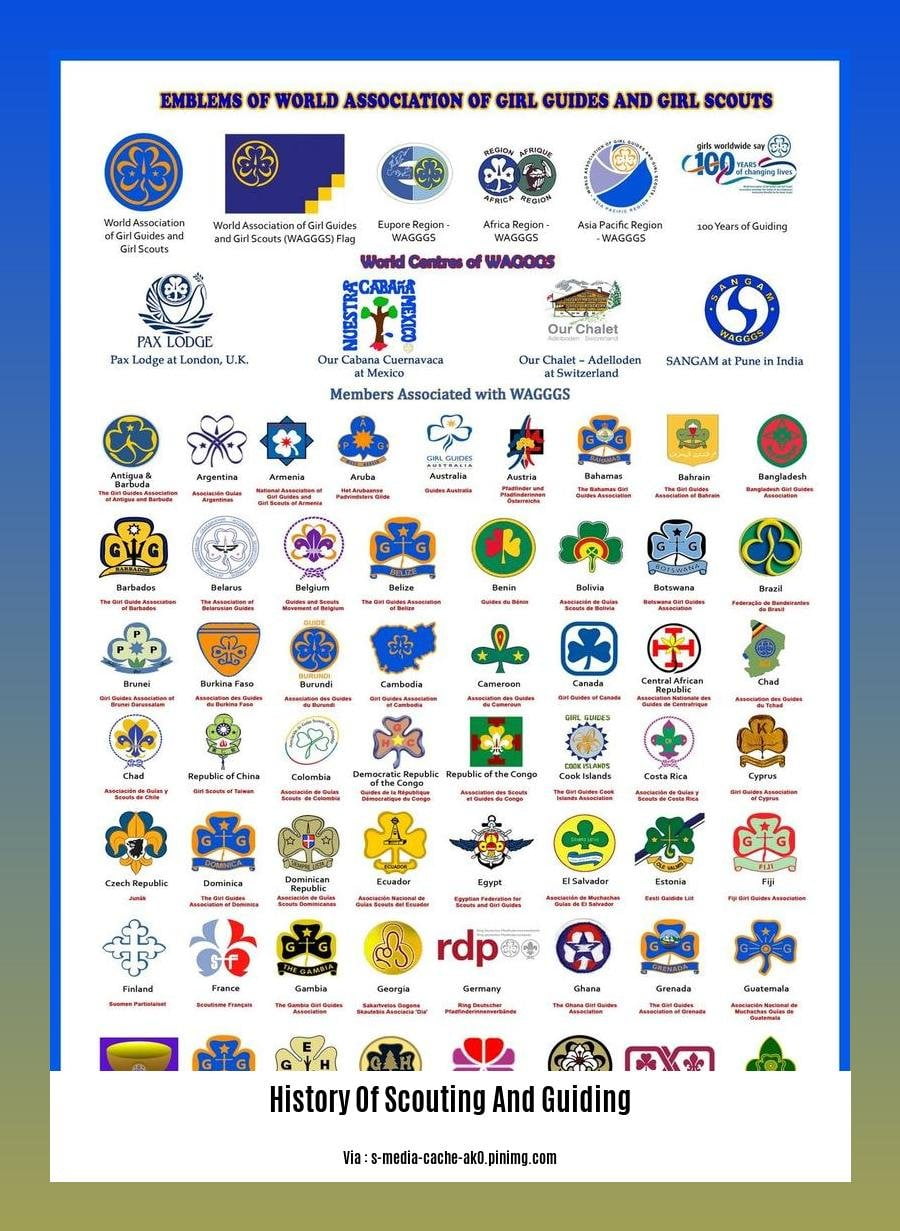
Scouting, with its rich history of innovation, has consistently adapted and evolved its programs to meet the changing needs of the youth it serves. This commitment to innovation is deeply rooted in the organization’s mission to prepare young people for success in an ever-changing world.
Embracing Change: A Legacy of Innovation
From the inception of Scouting, founder Robert Baden-Powell recognized the importance of tailoring the program to the specific needs of each country and culture. This resulted in the development of various national variations of the Scouting program, ensuring its relevance and impact across diverse regions.
Over the years, Scouting has embraced new technologies and methodologies to enhance the learning experience for its members. The introduction of the internet and digital tools has enabled the organization to offer virtual and blended learning opportunities, reaching a wider audience and adapting to the changing learning preferences of young people.
Scouting’s Commitment to Inclusivity
Innovation in Scouting has also been driven by the organization’s commitment to inclusivity and diversity. Recognizing that every young person deserves an opportunity to experience the benefits of Scouting, the movement has made concerted efforts to remove barriers and adapt its programs to accommodate a broader range of abilities, backgrounds, and circumstances.
This commitment to inclusivity has resulted in the development of specialized programs for young people with disabilities, as well as initiatives to reach out to underserved communities and provide financial assistance to those in need.
The Future of Scouting: Continued Evolution
As Scouting looks to the future, it remains committed to embracing innovation and adapting its programming to meet the evolving needs of young people. This will involve staying abreast of technological advancements, incorporating new learning methods, and continuing to foster an environment that encourages creativity and experimentation.
By embracing innovation, Scouting ensures that it remains relevant and engaging for generations to come, empowering young people to navigate the challenges of the future with confidence and resilience.
Key Takeaways:
- Scouting’s commitment to innovation is evident in its ability to adapt its programs to diverse national contexts, embrace new technologies, and promote inclusivity.
- Scouting has a long history of innovation, dating back to its inception when founder Robert Baden-Powell recognized the need to tailor the program to each country’s specific needs.
- Scouting’s embrace of technology has enabled it to offer virtual and blended learning opportunities, reaching a wider audience and adapting to the changing learning preferences of young people.
- Scouting’s commitment to inclusivity has resulted in the development of specialized programs for young people with disabilities and initiatives to reach out to underserved communities.
- Scouting remains committed to innovation and adapting its programming to meet the evolving needs of young people, fostering an environment that encourages creativity and experimentation.
Sources:
Scouting Innovations | Scouts
Program Innovations and Character in Cub Scouts … – ResearchGate
Contemporary Relevance and Future Directions: Scouting and Guiding in a Modern World
Scouting and Guiding movements continue to remain relevant in the modern world, providing young people with unique opportunities for personal growth, leadership development, and active citizenship. They embrace innovation while upholding their core values to stay current with the changing needs of youth.
The Evolving Landscape of Youth Development
In a world driven by technology and globalization, young people face new challenges and opportunities. Scouting and Guiding adapt their programs to address these evolving needs. They integrate contemporary skills such as digital literacy, environmental stewardship, and global citizenship into their activities.
Embracing Diversity and Inclusion
Scouting and Guiding organizations actively promote diversity and inclusion, ensuring that all young people have an equal opportunity to participate and benefit from their programs. They strive to create an environment where everyone feels welcome, respected, and valued.
Focus on Sustainability
Scouting and Guiding movements recognize the importance of sustainability and environmental protection. They engage young people in activities that promote conservation, outdoor ethics, and responsible resource management.
Technology for Engagement
Scouting and Guiding organizations leverage technology to enhance engagement, communication, and learning experiences for young people. They utilize online platforms, mobile apps, and virtual tools to deliver interactive programs, share resources, and connect with members worldwide.
Key Takeaways:
Scouting and Guiding remain relevant by adapting to the evolving needs of youth and incorporating contemporary skills and issues into their programs.
They promote diversity and inclusion, ensuring that all young people have equal opportunities to participate and benefit from their activities.
Scouting and Guiding organizations embrace sustainability, engaging young people in activities that promote conservation, outdoor ethics, and responsible resource management.
They utilize technology to enhance engagement, communication, and learning experiences for young people, connecting them with members worldwide.
[Sources]
FAQ
Q1: When did the history of Scouting begin?
A1: The history of Scouting can be traced back to 1908 when Robert Baden-Powell, a British army officer, organized a camping trip on Brownsea Island, England, with a group of 20 boys. This event is widely regarded as the birth of the Scouting movement.
Q2: What are the guiding principles of Scouting?
A2: Scouting is guided by a set of principles that emphasize practical learning, peer collaboration, and personal development. These principles include learning by doing, peer learning, and progressive development.
Q3: How has Scouting evolved over the years?
A3: Scouting has undergone numerous innovations throughout its history to meet the changing needs of young people. Some significant innovations include the introduction of various sections such as Cubs and Venturers, the adoption of the merit badge system, and the promotion of co-educational Scouting.
Q4: What impact has Scouting had on youth development?
A4: Scouting has played a crucial role in the personal growth and development of millions of young people worldwide. It instills values of self-reliance, teamwork, and respect for nature, and equips young people with essential life skills that prepare them for a successful future.
Q5: How does Guiding differ from Scouting?
A5: Guiding, also known as Girl Scouting, was established in 1909 to cater specifically to the needs of girls and young women. While sharing many similarities with Scouting, Guiding places a strong emphasis on empowering girls and young women to develop their leadership skills, self-confidence, and sense of community.
